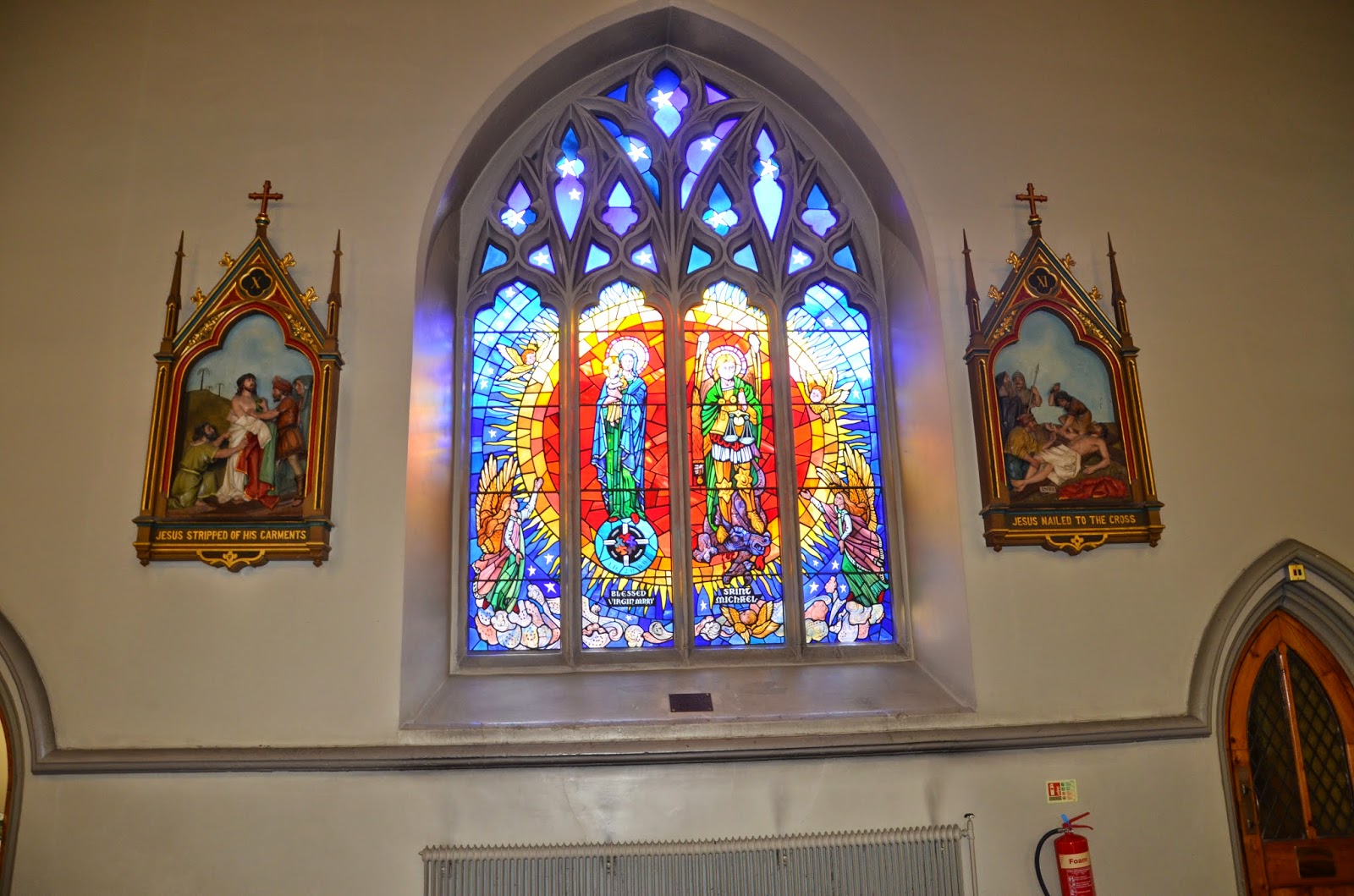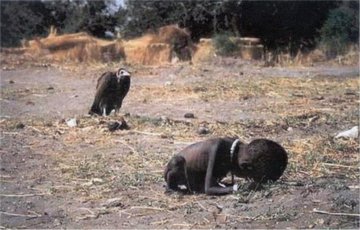Documentary Photography
1. Documentary
photography is a genre of photography that is used to chronicle significant or
historical events. This style of photography is used by many professional photojournalists;
however this type of photography may be amateur or artistic. This style of
photography is also meant to be spontaneous meaning that once the photographer
sees something that looks appealing it should be photographed immediately (i.e.
no lighting or composition).
2. There
are many purposes of documentary photographs, since these photographs relate to
real world events such as war, poverty and other sensitive subjects this
invokes a reaction in the audience and makes them feel a certain way depending
on the subject. Another purpose of documentary photography is showing the
audience the realism of the world and allows them to see through the eyes of
the people in the photo. Also by looking at documentary photographs it enables
the audience to notice the connotations that are in the photograph also. For
example with the Kevin Carter
photograph:
This photograph was taken to show the audience
exactly what is going on in less developed countries but also to allow them to
see just how hopeless and barren the world for the child in the photo is.
3. Photogravure,
Halftone and the I-phone have had a significant impact on this genre of photography.
One big impact they have had is how they improve the quality of the photographs
that have been taken. They increase the amount of lighting in the photo and
reduce the grain effect to a minimum (especially the IPhone). The reason for
this is because the IPhone possesses a higher resolution camera that can take
pictures or record videos at 480p.
Jacob Riis
1.
Jacob Riis was a Danish-American, journalist and social
documentary photographer. He was born in Denmark on 3rd may 1849. He
is the third child of fifteen He is known for his photography work that helped
the impoverished and those impoverished were subject to many of his
photographs.
2.
The themes of Jacob Riis’s photographs tend to revolve
around poverty and crime in 18th century New York. His first
photograph was of a crime ridden slum in an infamous street called Mulberry
Street, which is notorious for being one of the most crime filled community in
New York.
3.
In his image there are men standing in a narrow street, it
is a long shot, this shot was used to capture every detail in the street
including the buildings and the type of people who live in this street. The
street itself is portrayed as place of poverty and crime due to its size and
the body language of the people in the shot. The connotations of this
photograph are that this street is fearful place to live and that the people
who live there are thieves or criminals, this idea is reinforced by the man
wielding a weapon and the body language of the men in the photo.

In this image there are a group of boys sleeping on the
streets in the dirt with ripped clothes and helpless expressions on their face.
The shot type used is a long shot, as with his first photograph Riis wants to
capture all the detail of both the people and their surroundings. Their facial
expressions show reinforces the fact that they are poor and have nowhere to go
and adds emotional depth to the photo. The connotations of this photo include
poverty and orphaned children as the photo only shows young children and no
adults. This shows the severity of New York City in 1920’s America and allows
the audience to feel sympathy for the people in the photo.
In this image we see a group of men standing over a boy who
sitting in a chair and appears to be holding some kind of fabric. The shot is a
long shot; this shot was used to show the audience the entire surroundings. The
clothing of the people in the photo are a contrast to each other as the boy
wears cheap overalls whereas the adults
wear shirts and waistcoats (implying they are more wealthy or are better than
he is). The connotations of this image are child abuse and forcing him to work.
I know this because there is a visible bruise on his face and his facial
expression shows that he is fearful of these men as he is the only one who
isn’t smiling. Also he is the only one in the room who is holding fabric while
everyone else stands over him (implying their power over him).
4.
The purpose of Jacob Riis’s photographs are to show the
world the reality that these people have to live and the harshness of their
situations as most of them are homeless, orphans or are forced to work and then
be beaten. He wants to get an emotional response from his audience and he wants
them to feel a particular way depending on the image. However he also wants to
be factual and let his audience know that this is real and it is wrong.
Robert Capa
1.
Robert Capa was a Hungarian war photographer and photojournalist;
he was born on October 22nd 1913 and died on 25th may
1954. Throughout his career he covered five wars they include: the Spanish civil
war, the second Sino Japanese war, World War 2 across Europe, the Arab-Israeli
war and the first Indochina war.
2.
The theme of Robert Capa’s photographs revolve around
war, the casualties of war and the effects war can have on soldiers, families
and the entire world.
3.
In this image titled “The Falling Soldier” in it we see a
man who is falling over after having been shot and is seen brandishing a rifle.
The shot used is a long shot, the reason this shot was used was to show the
audience the surroundings the person is in. by using this shot it shows that
the man is in a deserted field, implying that when he dies he will be alone.
The setting also adds to the implication that soldiers die on the battlefield
and are not in the safety of their homes, this allows the audience to
sympathise with the person in the photo. The connotations of this image are
mostly anti-war as the image of the soldier falling over, dying coupled with
the empty background connotes that war leaves the soldier dead, forgotten and
insignificant.

In this image it shows a group of soldier running through
water to reach what appear to be ships. The shot used is a long shot to show
the intensity of the environment and make the audience feel like they are with
the soldiers running towards their destination or away from a possible threat.
Since they also appear to be running towards their destination it gives a sense
of urgency to the audience and makes them wonder what happened to most of the
soldiers next. The connotation of this photo could include walking into the
unknown as they are running into the sea hoping to reach their boats in time,
this could be an implication as to when they in battle and are in unknown
territory and possibly die. Another connotation could be the sea representing
emptiness as with the previous photo and could also imply that if the soldiers
die at sea they will be alone and unable to bring home to their families.
In this image we see a young boy wearing military clothing
with other soldiers standing behind him holding rifles and machine guns. The
shot used is a mid-long shot, the photo shows only parts of the environment but
mainly focuses on the boy and the people behind him. With this it allows the
audience to analyse and focus their attention on these soldiers and boy, the
photographer was trying to get an emotional response from the audience as
people would clearly be shocked by seeing a young boy wearing military gear and
carrying weapons. The connotations of this image include desperation as the
child may not have had any other choice but to join the army in order to
survive or to have companionship with other as he could be an orphan.
4.
The purpose of Robert Capa’s photographs is to show his
audience the horror’s and casualties of war. Through his photographs we see the
brutal truth and the lengths that men, women and children will go to, to
survive. He wants his audience to emotionally respond to his photographs and
each one makes them feel differently, be it shock, disbelief, sympathy or
empathy.
1.
I believe that
the images have analysed are factual because they show real people in real
places and their individual situations. Even though these images may be factual
they may be staged just for the camera and for the photographer to get a good
shot, this however doesn’t mean that these images are “Fake” meaning that these
events are real and this the photographers want their audience to realise. I
believe that in some cases documentary photography could be impartial as all of
the images do depict people as poor, suffering and facing death daily. This
makes documentary photography stand out amongst other forms of photography as
this form deals with real problems in the world including war, poverty and
homelessness.
2.
Documentary photography may be an unreliable source for
historic documentation as there is no further detail to the image, except for
what the viewer is seeing for themselves. This doesn’t give any other form of
information to the viewer and they may misinterpret the image and completely
misunderstand the connotations of the image as a whole. Depending on the depth
of the image and the clear message it is sending to its audience then it would
be a good source for a history document, but if it doesn’t contain more
information about the person or location of the photograph then it shouldn’t be
used.
















































